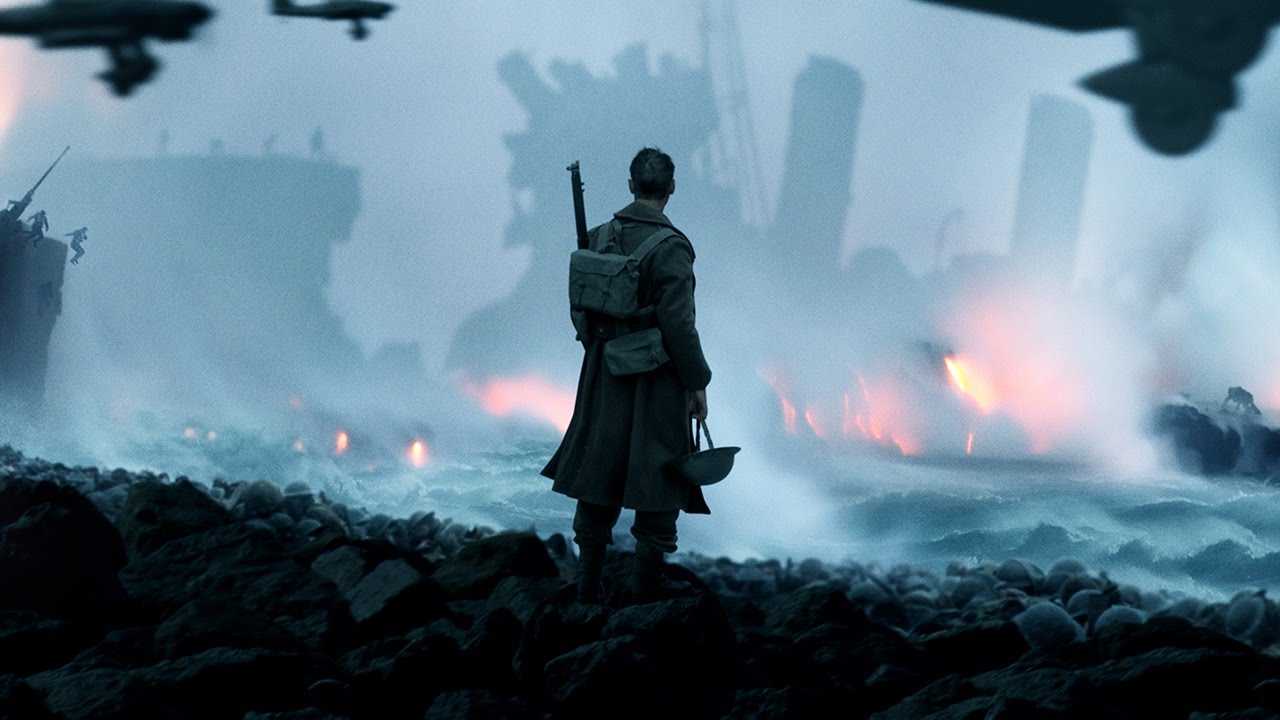A new trailer for Christopher Nolan‘s upcoming film Dunkirk has been released. The movie is based on Operation Dynamo.
The Dunkirk evacuation, code-named Operation Dynamo, also known as the Miracle of Dunkirk, was the evacuation of Allied soldiers from the beaches and harbour of Dunkirk, France, between 26 May and 4 June 1940, during World War II. The operation was decided upon when large numbers of British, French, Belgian, and Canadian troopswere cut off and surrounded by the German army during the Battle of France. In a speech to the House of Commons, British Prime Minister Winston Churchill called the events in France “a colossal military disaster”, saying “the whole root and core and brain of the British Army” had been stranded at Dunkirk and seemed about to perish or be captured. In his We shall fight on the beaches speech on 4 June, he hailed their rescue as a “miracle of deliverance”.
After Nazi Germany and Soviet Union invaded Poland in September 1939, France and the British Empire declared war on Germany and imposed an economic blockade. The British Expeditionary Force (BEF) was sent to aid in the defence of France. After the Phoney War, Germany invaded Belgium and the Netherlands on 10 May 1940, and three of their Panzer corps attacked France through the Ardennes and rapidly drove to the English Channel. By 21 May, the German forces had trapped the BEF, the remains of the Belgian forces, and three French armies in an area along the northern coast of France. Commander of the BEF, General Viscount Gort, immediately saw that evacuation across the Channel was the best course of action and began planning a withdrawal to Dunkirk, the closest location with good port facilities. On 22 May 1940, a halt order was issued by the German High Command, with Adolf Hitler’s approval. The burden of preventing the evacuation was left to the Luftwaffe, who faced opposition from the Royal Air Force, until the order was rescinded on 26 May. This gave the trapped Allied forces time to construct defensive works on the ground and pull back large numbers of troops toward Dunkirk, to fight the Battle of Dunkirk. From 28–31 May 1940, in the Siege of Lille, the remaining 40,000 men of the once-formidable French First Army fought a delaying action against seven German divisions, including three armoured divisions.
On the first day of the evacuation, only 7,669 men were evacuated, but by the end of the eighth day, a total of 338,226 soldiers had been rescued by a hastily assembled fleet of over 800 boats. Many of the troops were able to embark from the harbour’s protective mole onto 39 British destroyers and other large ships, while others had to wade out from the beaches, waiting for hours in the shoulder-deep water. Some were ferried from the beaches to the larger ships by what came to be known as the little ships of Dunkirk, a flotilla of hundreds of merchant marine boats, fishing boats, pleasure craft, and lifeboats called into service for the emergency. The BEF lost 68,000 soldiers during the French campaign and had to abandon nearly all of their tanks, vehicles, and other equipment.
In his speech to the House of Commons on 4 June, Churchill reminded the country that “we must be very careful not to assign to this deliverance the attributes of a victory. Wars are not won by evacuations.”
* info from Wikipedia
*The views and opinions expressed on this website are solely those of the original authors and contributors. These views and opinions do not necessarily represent those of Spotter Up Magazine, the administrative staff, and/or any/all contributors to this site.
[jetpack_subscription_form]

